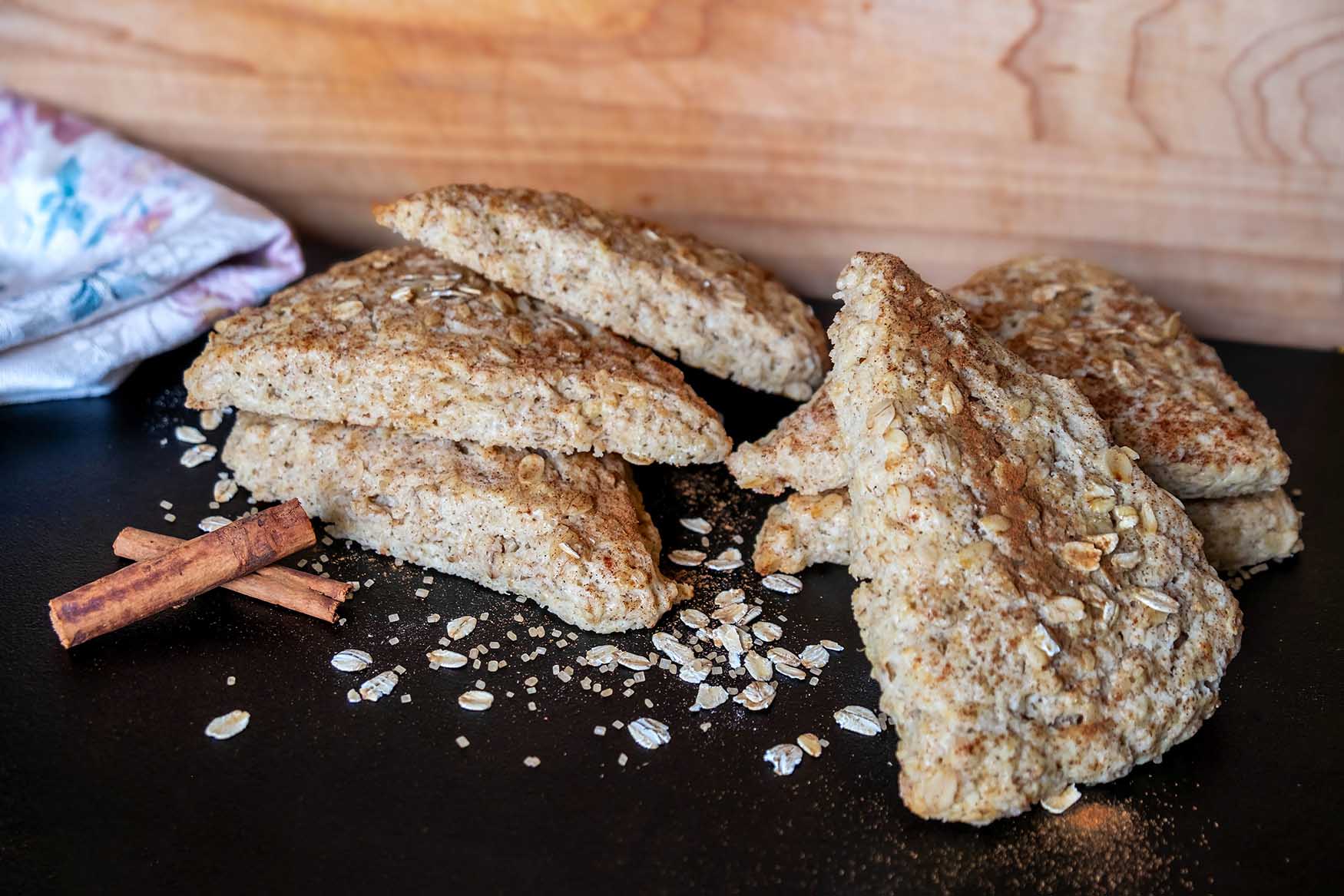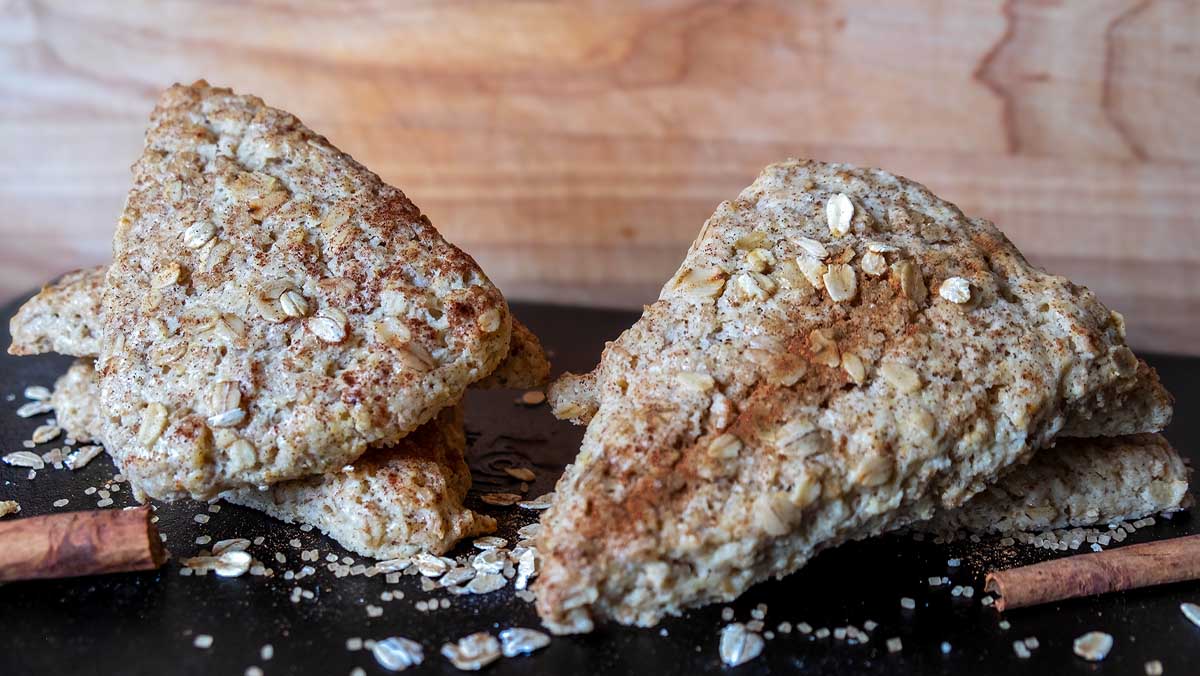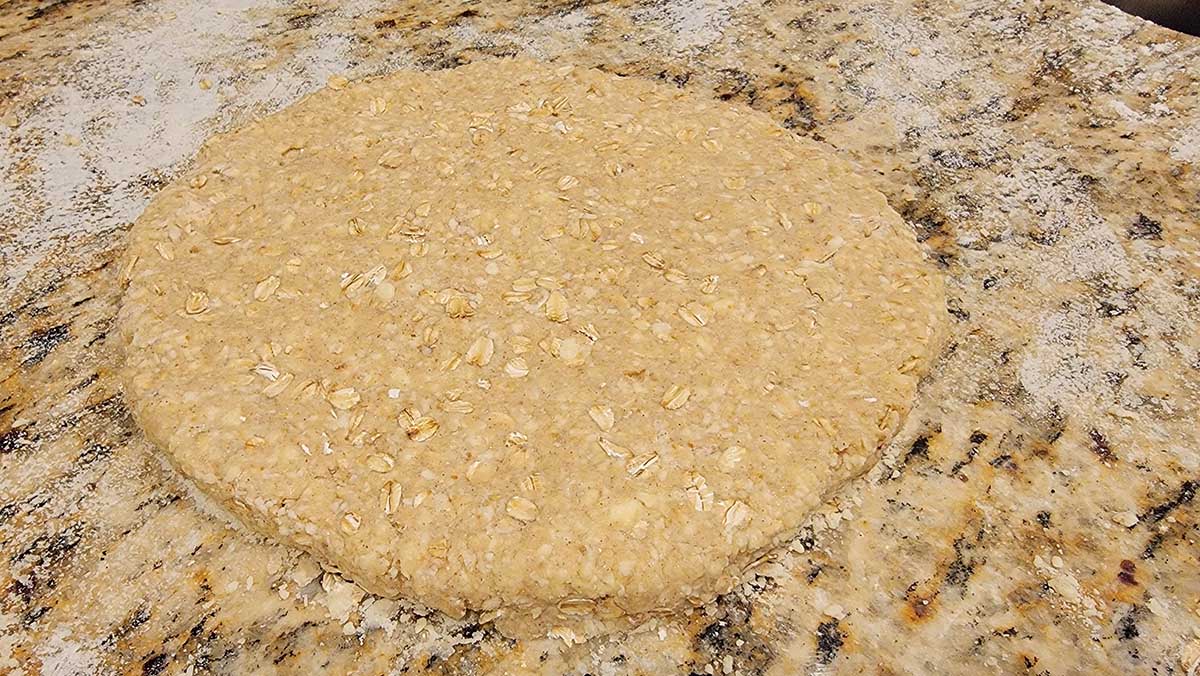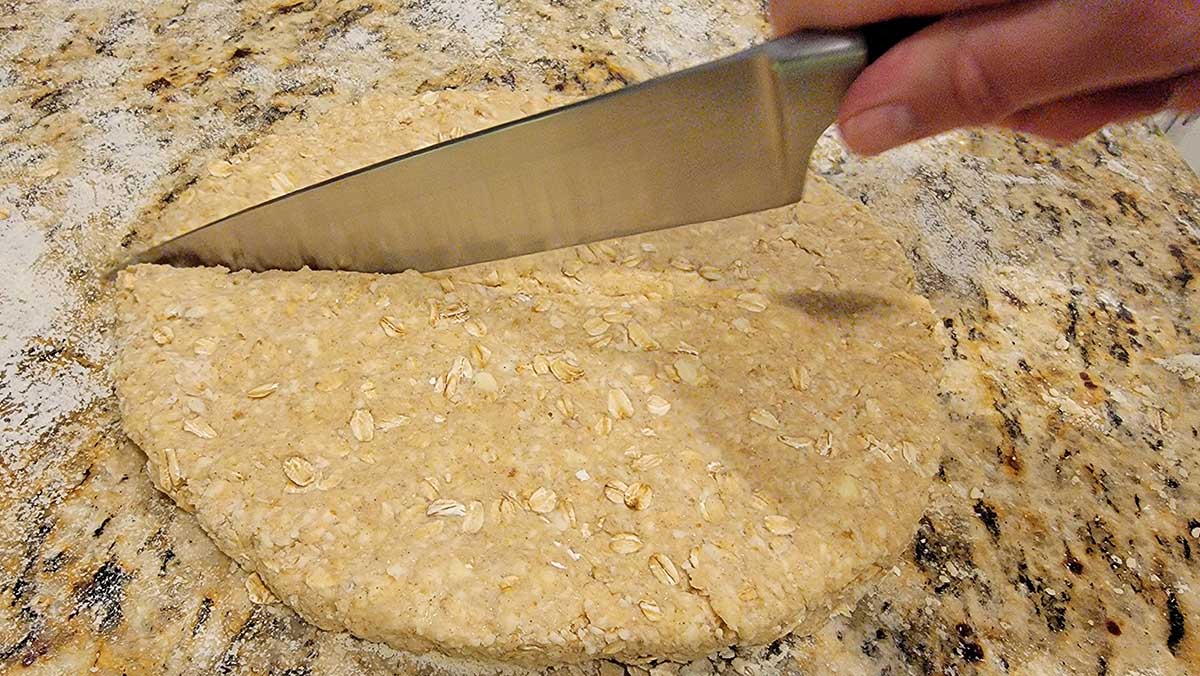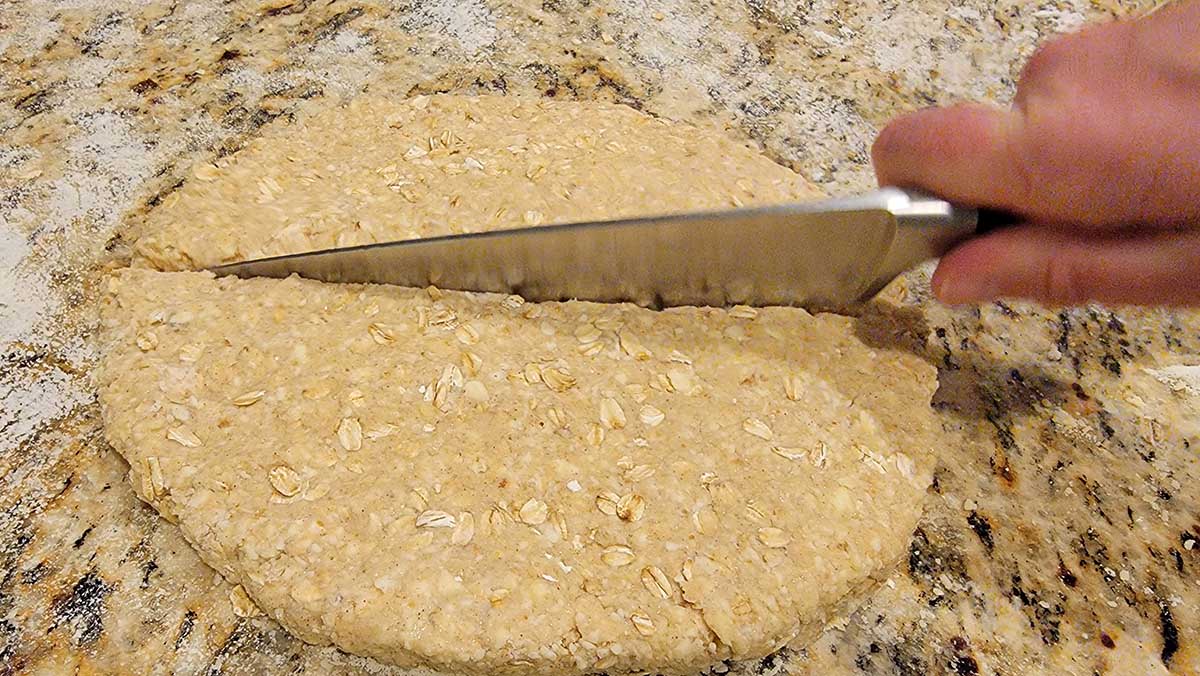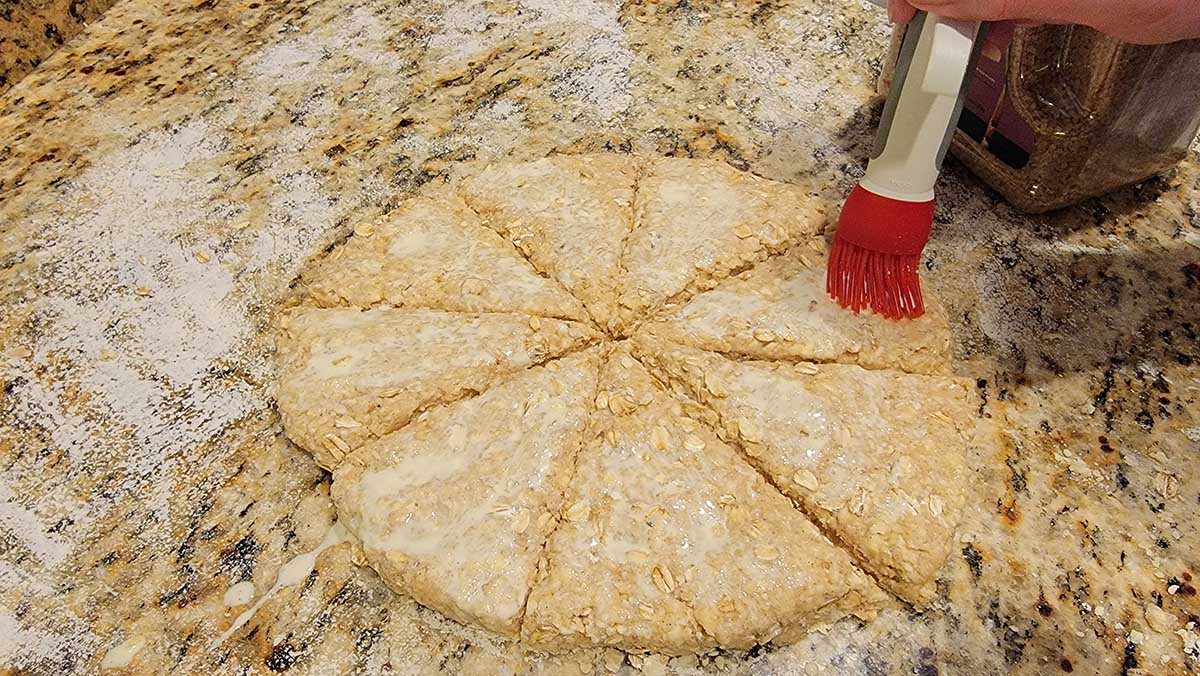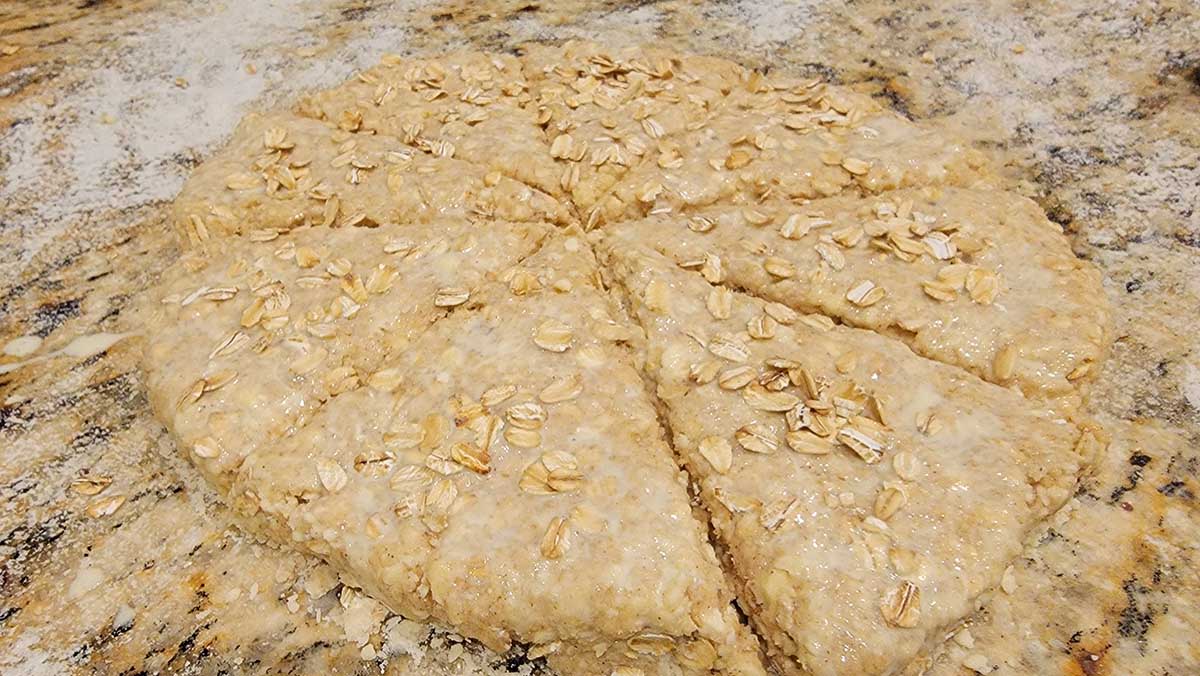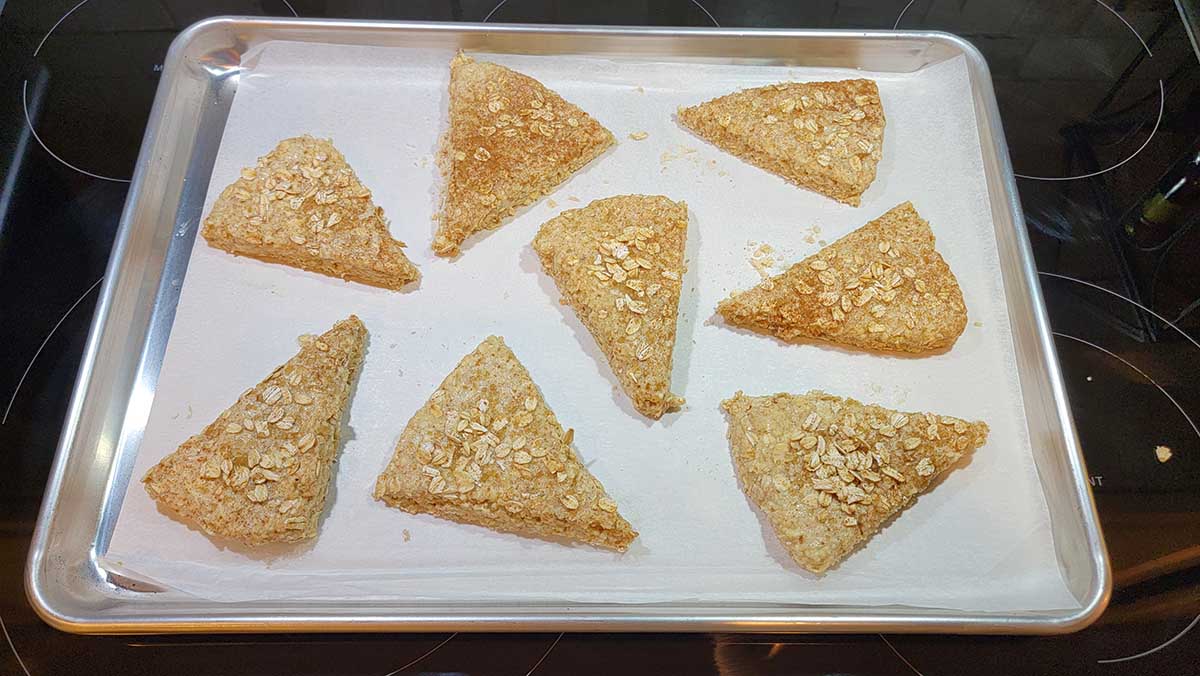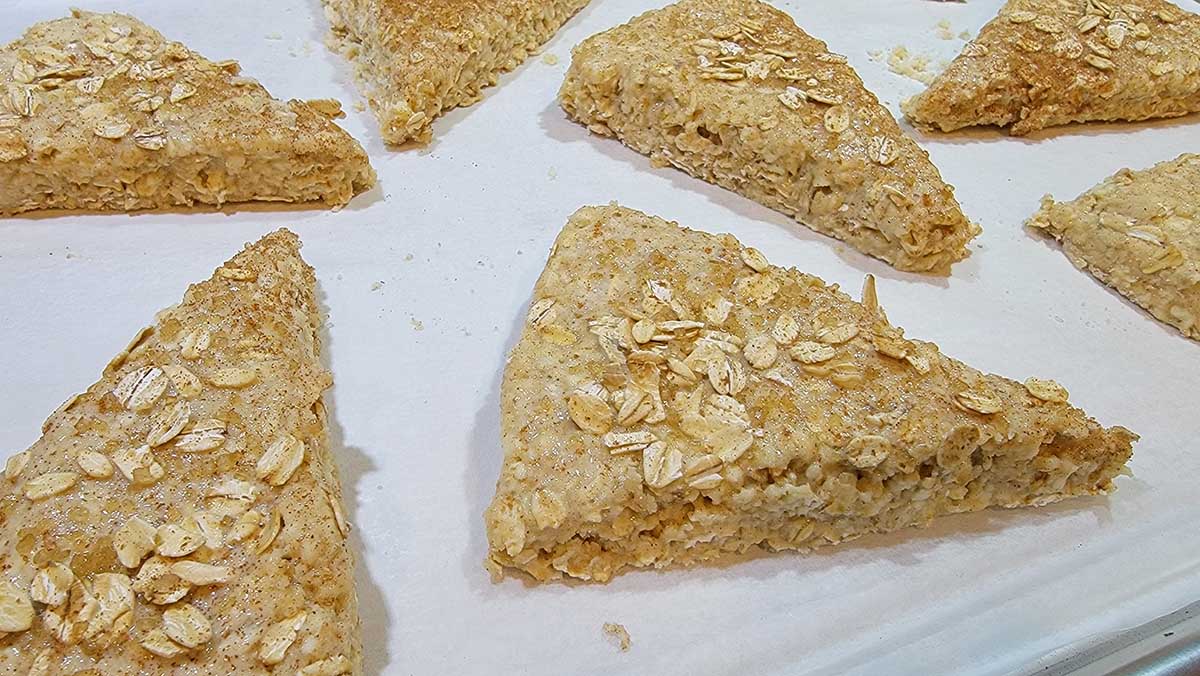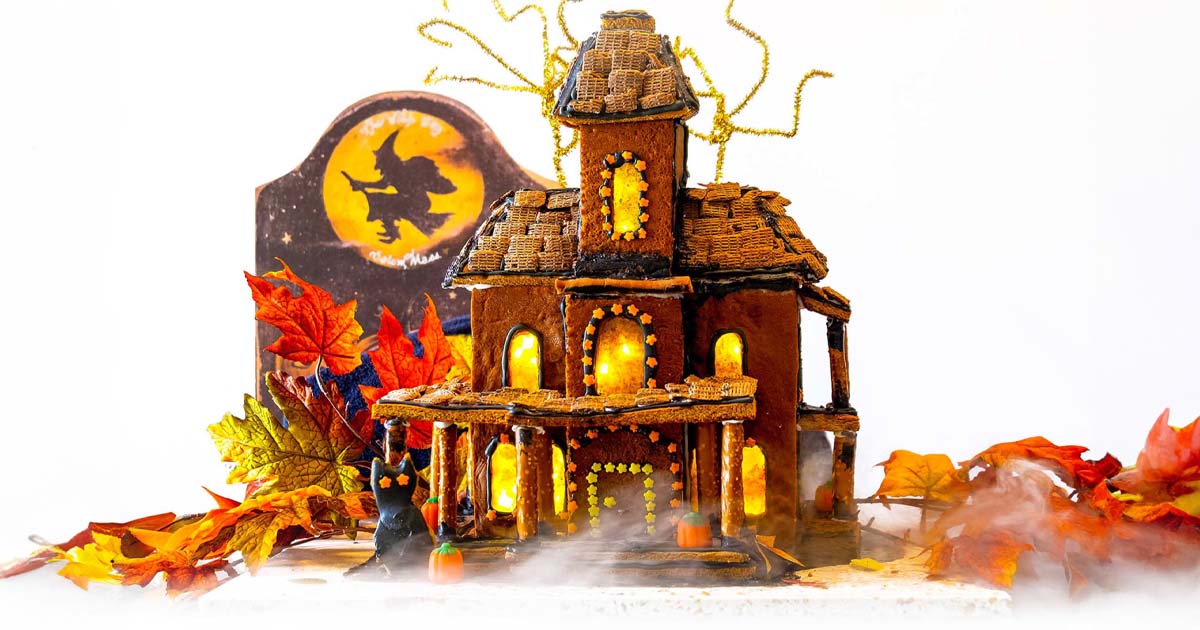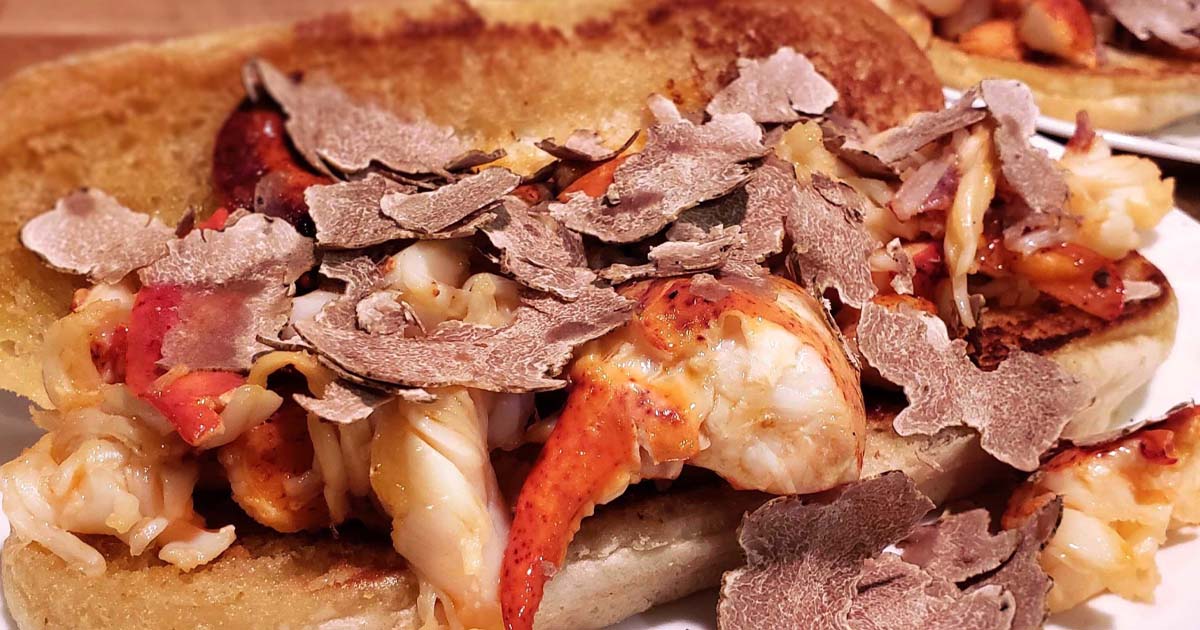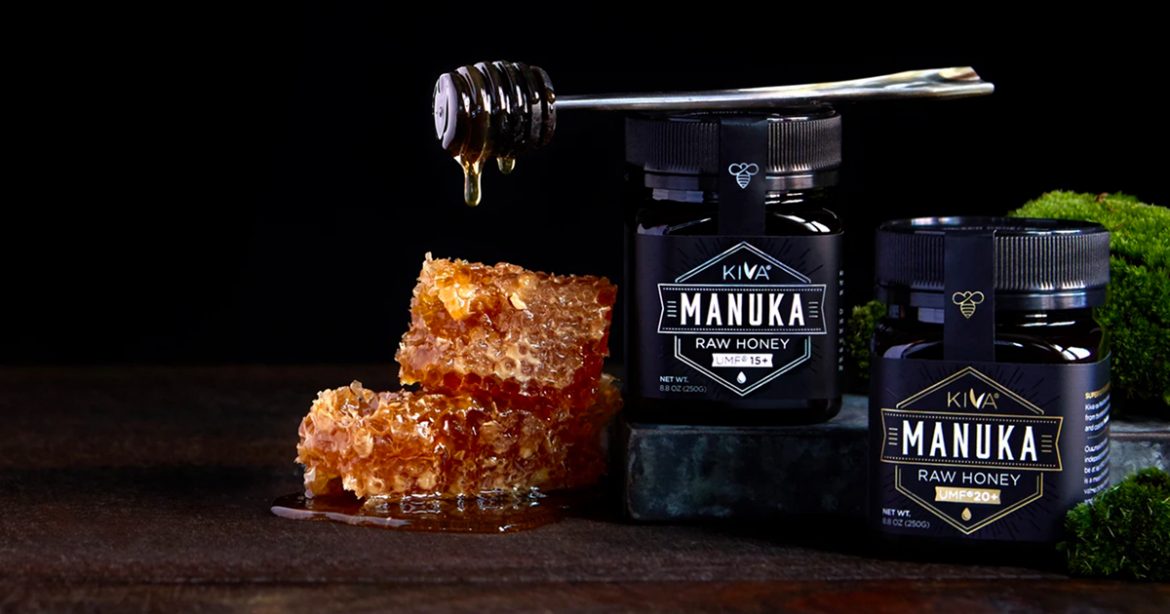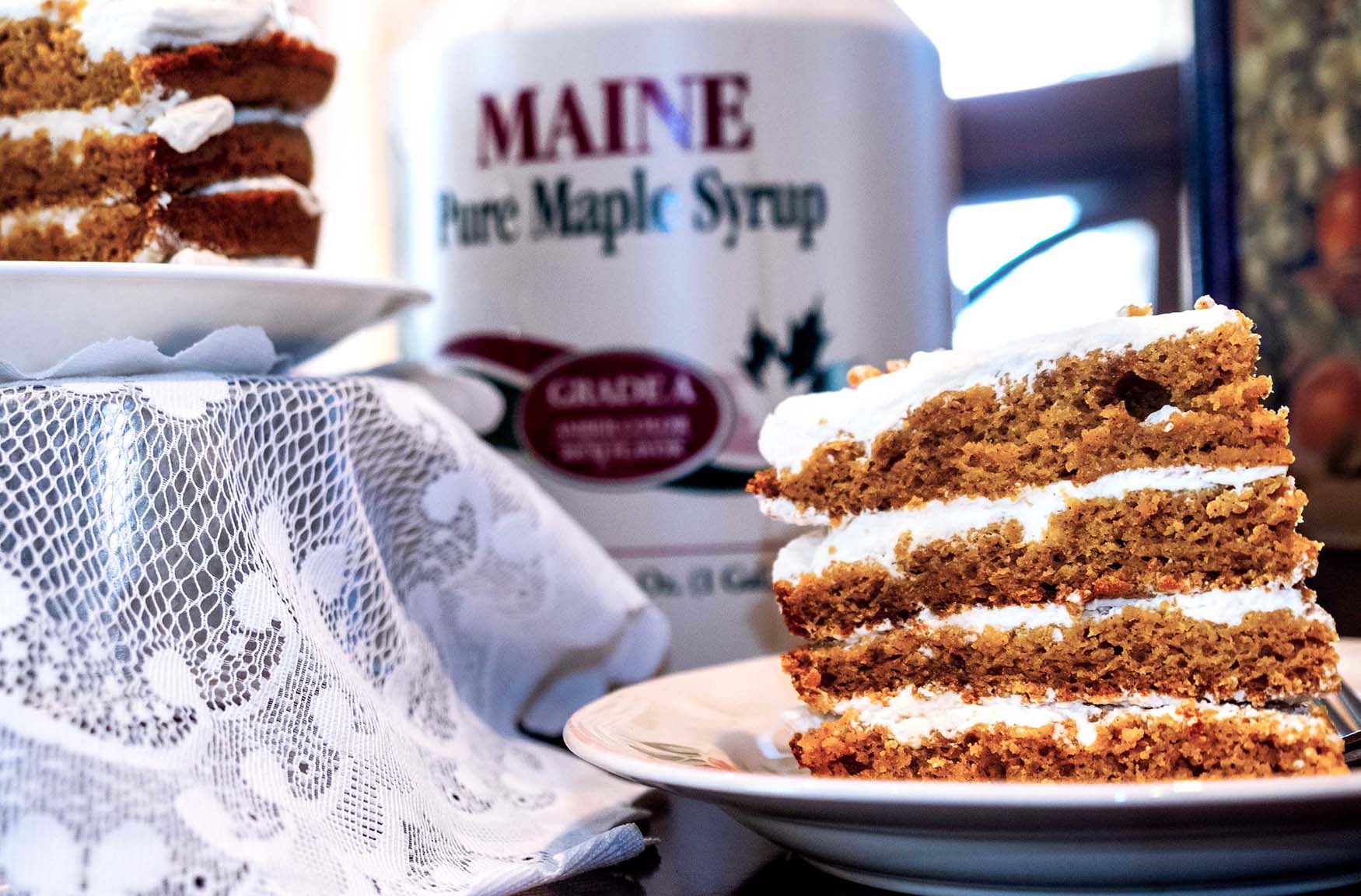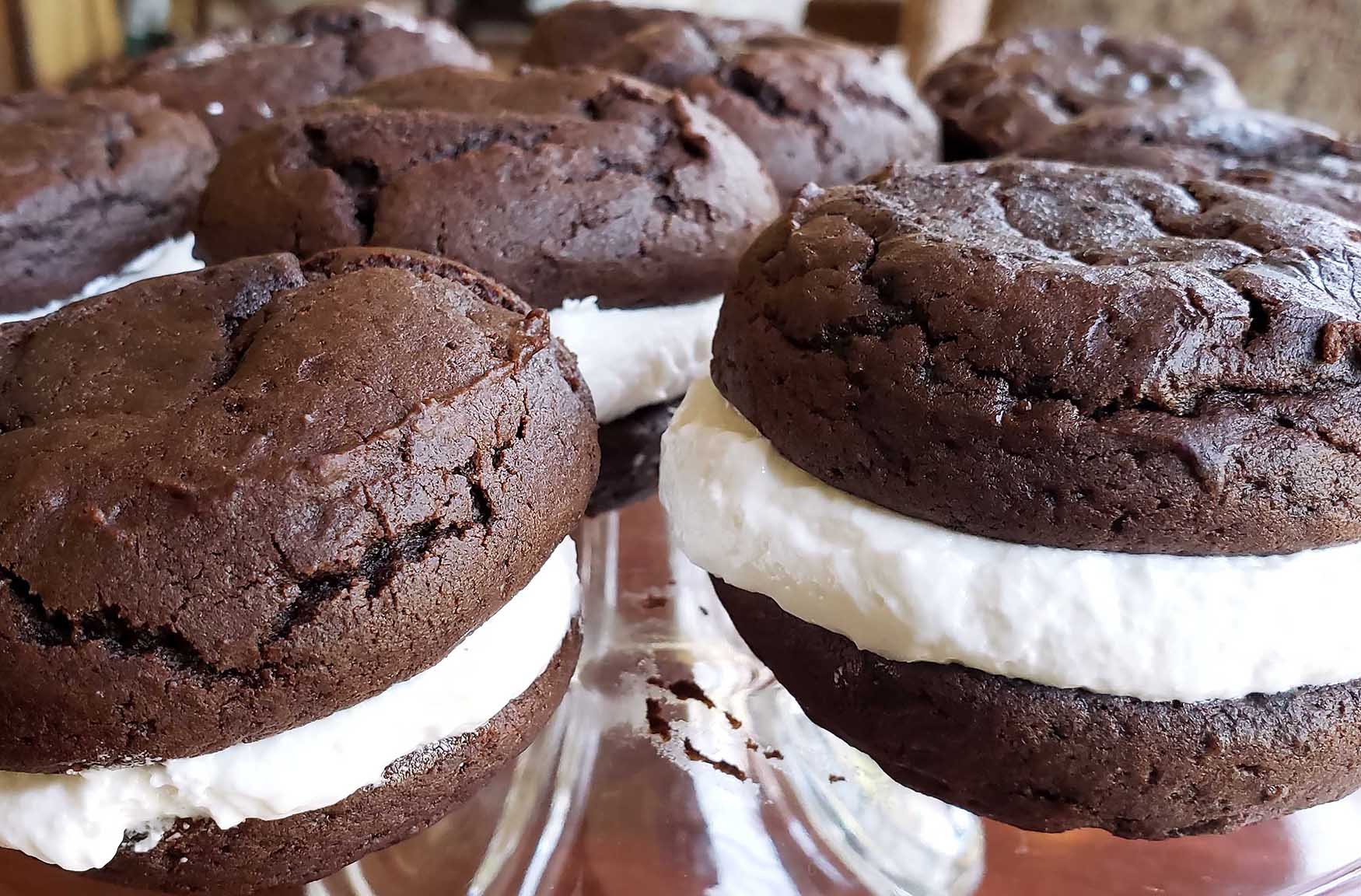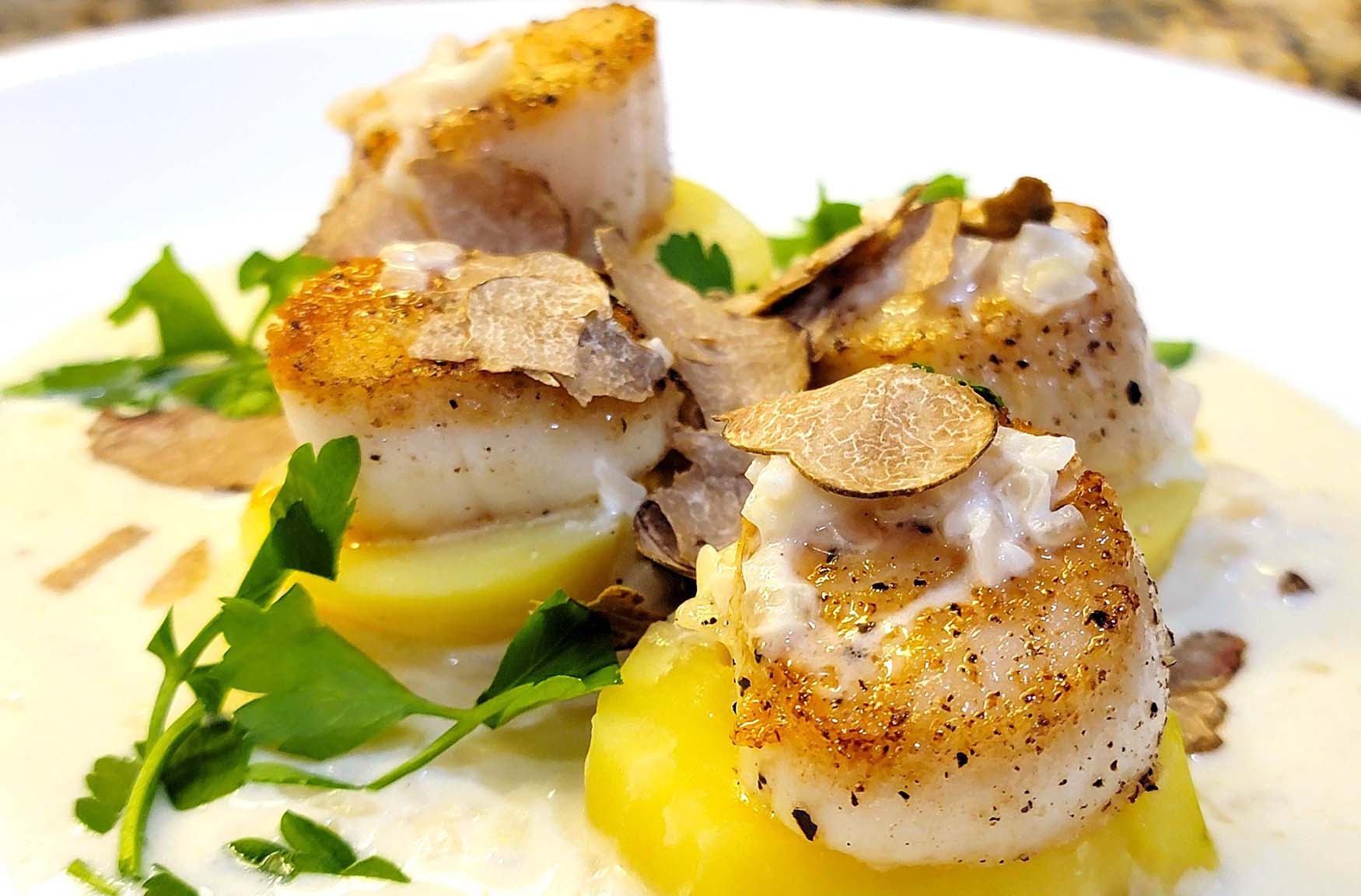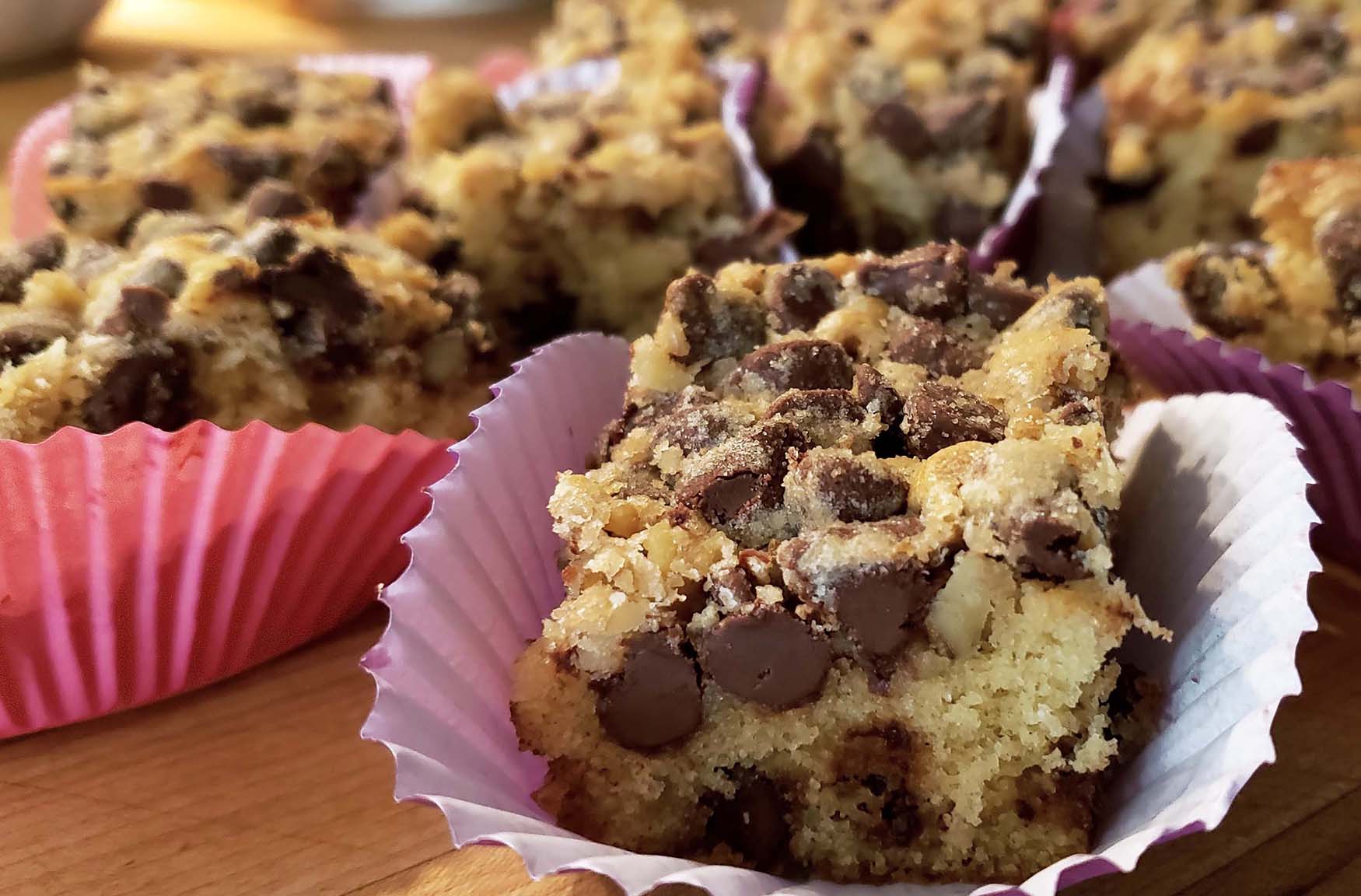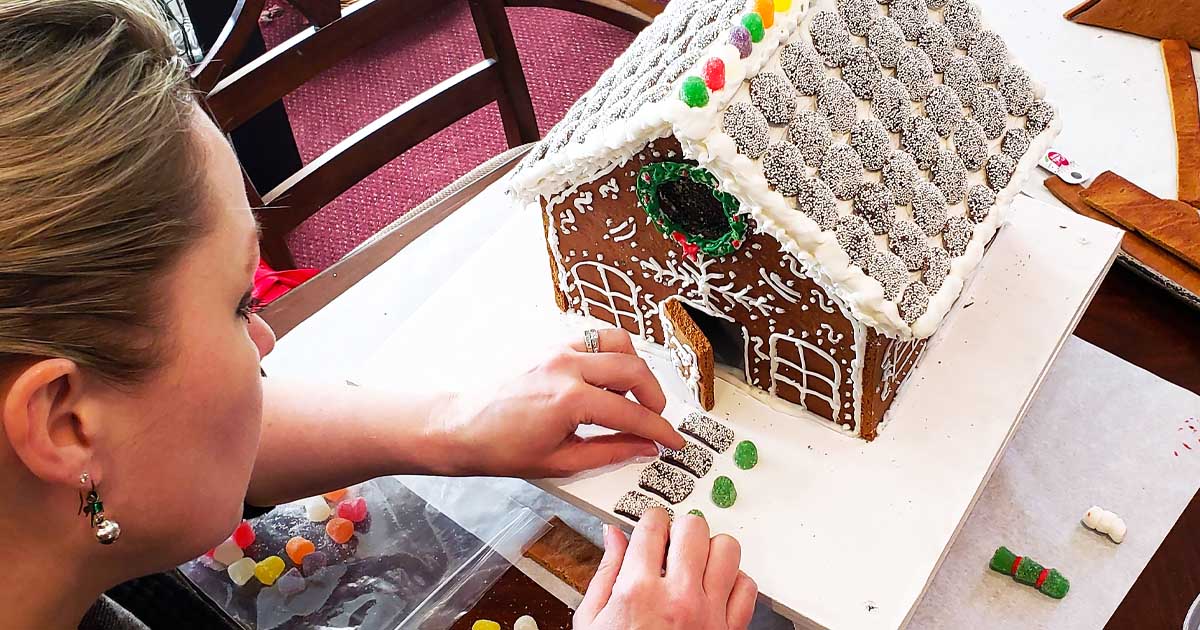RECIPE: Oatmeal Cinnamon Scones
Scones (especially my Oatmeal Cinnamon Scones – recipe below) and afternoon tea are two things that just belong together. But have you ever wondered why?
As a former Maine innkeeper who spent time each and every day baking treats for the afternoon tea we offered our guests, I always enjoy any opportunity to learn more about the intersection of baking culture with hospitality traditions. There’s something so interesting about the origin stories of the baked goods we all enjoy and the winding paths they’ve taken through the years.
For example, the history of afternoon tea, shrouded in elegance and rooted in necessity, unveils a narrative that transcends time and continents, weaving together tales of aristocracy, innovation, and social etiquette. And, I mean, what’s better than a steaming cup of tea and a plate of delectable scones?
Before we get to the New England Innkeeper Recipe for Oatmeal Cinnamon Scones, let’s take a deeper look at the history of afternoon tea.
Let me take you back: It’s the early 1800s in England, and the Duchess of Bedford, Anna Russell, is feeling a bit peckish. Eager to satisfy her mid-afternoon cravings, she pioneered the concept of afternoon tea—a light repast of sandwiches, sweets, and, of course, tea.
What began as a personal indulgence soon evolved into a fashionable social gathering, with Russell’s elite circle embracing the tradition with fervor.
One other detail many are unaware of: there is a difference between “afternoon tea” and “high tea.”
For the upper crust, afternoon tea was more than just a meal; it was a symbol of refinement and decorum. As guests reclined on plush couches and armchairs, delicate porcelain teacups in hand, they adhered to a strict code of conduct. From placing napkins on laps, to stirring tea with genteel grace, to spreading clotted cream and jam on their freshly baked Oatmeal Cinnamon Scones (recipe below) – every gesture was a testament to genteel sophistication.
Across the social spectrum, a parallel custom known as “high tea” emerged, offering a heartier fare enjoyed by the working class after a long day’s labor. Without the luxury of a lunch break during their long hours at work, the proletariat would often arrive home famished and partake in a more substantial “high” tea immediately after work, often in place of a later evening dinner.
Despite their distinct culinary offerings, both afternoon tea and high tea shared a common thread: a sense of community fostered around the dining table, where stories were shared and bonds were strengthened.
An Interesting Fact: The names “afternoon tea” and ‘high tea” actually derive from the height of the furniture on which the meals were served. High tea was served at the dinner table, and afternoon tea was enjoyed on fancy couches and chairs with low tables (coffee tables) of the elite.
At Like You Know: In England, using the term “high tea” when you really mean “afternoon tea” is a dead giveaway you’re American!
Afternoon Tea: Preserving the Tradition
Fast forward to the present day, and the tradition of afternoon tea has become a cherished indulgence, albeit one reserved for special occasions.
Not too long ago, while Eric and I were in Paris over the holiday season, we were fortunate to score reservations to the famous “Noel Tea Time” at the luxurious Restaurant Le Dali, at Hôtel Le Meurice.
We almost felt like guests of the Duchess of Bedford as we relaxed in the refined and opulent surroundings and enjoyed savoring some of the edible art created by Cedric Grolet – widely accepted as the best pâtissier in the world. His signature desserts are “lemons, hazelnuts, pears, apricots, avocados, oranges, apples, reproduced perfectly. The skin is made of chocolate, the filling of a mousse of surprising lightness and a refreshing jelly made with the fruits themselves.”
Truly one of our greatest culinary / hospitality memories. Special occasion, indeed!
In the hustle and bustle of modern life, the leisurely pace of an afternoon tea seems like a relic of a bygone era. Yet, for those who seek respite from the daily grind, a well-appointed tea service offers a moment of tranquility amidst the chaos.
While I was an innkeeper, I enjoyed the privilege of preserving this timeless tradition, offering guests a taste of British heritage with our own personalized twists. At our inn in Ogunquit, Maine, afternoon tea was more than just a ritual—it was a cherished tradition that set us apart. With a nod to Anna Russell’s legacy, we often served up fluffy, indulgent scones (recipe below) that were some of the highlights of our tea service.
Our tea services at the inn were – obviously – much more casual and relaxed than the somewhat humorous vintage video above – but it’s interesting how many of the sentiments and thought processes explained by the narrator also entered my mind when setting up the inn’s tea service every day.
Now, let’s turn our attention to the star of the show (and the reason you’ve read this far): The Scones (recipe below).
The scone has undergone its own culinary evolution over the centuries. From humble yeast cakes cooked on bakestones to the modern quick breads we know today, the scone has remained a beloved staple of afternoon tea.
With roots tracing back to ancient Welsh traditions, scones were originally crafted from oats, formed into a sizable round shape, scored into four or six wedges resembling triangles, and then cooked on a griddle over an open flame (which later transitioned to a stovetop). As oven baking became prevalent, and scones evolved into the modern quick breads we know today, the round dough was sliced into wedges, and the scones were baked individually.
You might have come across two distinct pronunciations of “scone.” But which one is correct? Well, they both are! In Scotland and Northern England, it’s pronounced “skahn” (rhyming with “gone”), while in the south of England, it’s “skoan” (rhyming with “own”), the version adopted by the U.S. and Canada.
Fun Afternoon Tea Fact: Scones were not actually added to the afternoon tea tradition until the 1900’s.
My personal Oatmeal Cinnamon Scone recipe pays homage to the original oat-based scones and the venerable tradition of afternoon tea – while also adding a touch of modern culinary innovation. With a fluffy texture and a hint of warm cinnamon, these scones are the perfect accompaniment to a steaming pot of tea. Whether enjoyed with jam and clotted cream or savored on their own, these scones embody the timeless charm of afternoon tea.
We believe the Duchess of Bedford would approve – and she’d probably ask us for our Oatmeal Cinnamon Scones recipe!
Here is the Full New England Innkeeper Recipe for…
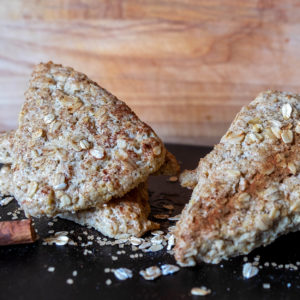
Oatmeal and Cinnamon Scones
Ingredients
- 1 1/2 Cups Uncooked Oatmeal (128 grams)
- 1/4 Cup Whole Milk
- 1/4 Cup Heavy Cream
- 1 Egg
- 1 1/2 Cups Unbleached All Purpose Flour (213 grams)
- 1/3 Cup Sugar (64 grams)
- 2 Teaspoons baking powder
- 1/2 Teaspoon Salt
- 1/2 Teaspoon Cinnamon
- 10 Tablespoons unsalted butter (frozen and shredded using the large holes on a box grater)
- 1 Tablespoon Coarse Turbinado Sugar (for sprinkling)
Instructions
Pre-Recipe Butter Preparation
- A few hours before plan on baking this recipe, begin by freezing your butter and then shredding it (into a glass bowl), using the large side of a box grater. It can be helpful to chill the box grater in the freezer before you use it (so the butter doesn't melt onto a warm grater).
- Place the shredded butter back into the freezer until you are ready to incorporate it into the recipe.
Prepare the Scones
- Preheat oven to 375 degrees
- Spread oats on a baking sheet and toast for 8 to 10 minutes on the oven's middle rack until lightly browned. Remove pan from oven and cool on a wire rack. When oats are cool, separate out 2 tablespoons and put both portions of oats aside.
- Combine milk, cream, and egg in a large Pyrex-style measuring cup and mix well with a whisk. Remove 1 tablespoon to small bowl and reserve for glazing
- In a food processor, pulse flour, 1/3 cup sugar, baking powder, cinnamon and salt until combined.
- Scatter shredded butter (from freezer) evenly over the dry ingredients in the food processor and pulse until mixture resembles coarse crumbs. (12 to 14 one-second pulses).
- Transfer mixture from food processor into a large bowl and add 1 cup of the cooled oats.
- Add liquid ingredients from measuring cup into the bowl and use a rubber spatula to fold the liquid in until until large clumps form.
- Mix dough by hand in the bowl (folding it over on itself) until dough comes together. It will still seem somewhat crumbly. Do not overwork the dough. Once the dough can be shaped into a loose ball, place the dough ball into the freezer for 5 to 10 minutes. This will keep the butter cool (for a better finished texture) and make the dough easier to work.
- Dust your work surface with half of the reserved oats. Turn dough (from freezer) out onto the work surface. Press the dough ball down lightly and dust the top of the dough with the remaining oats. Gently pat the dough ball into a 6-7” circle disk, approximately 1” thick.
- Cut dough into 8 wedges with a large knife (similar to how you would slice a pizza) and place on a parchment lined baking sheet, spacing the scones approximately 2" apart from each other.
- Brush surfaces with reserved egg mixture and sprinkle with the 2 tablespoons of reserved toasted oats plus the 1 tablespoon of coarse turbinado sugar.
- Bake until golden brown (12 to 14 minutes).
- Cool baking sheet on a wire rack for 5 minutes, then remove individual scones to a cooling rack and allow to cool to room temperature (approximately 30 minutes).
- If you fancy, enjoy with a cup of English Tea. “Scrummy!”
Notes
- Very cold (frozen) butter is really important for this recipe! You can’t let it get warm because it melts and mixes into the flour and then the flour becomes too wet.
- Pre-cooling the box grater in the freezer before using it to shred/grate the butter will help you achieve better results.
- The dough will be very crumbly. If this is your first time baking these scones, you may initially be concerned that the dough won't come together, but it will.
- Even though the dough is crumbly, don't overwork it.
- Putting the dough ball back into the freezer for 5 to 10 minutes will bring the temperature of the butter back down, make the dough easier to form into a disc, and result in a better final texture for the baked scones.
Nutrition (per serving)
Nutritional information is only an estimate. The accuracy of the nutritional information for any recipe on this site is not guaranteed.
Share this recipe
Disclaimer: Information is harvested (at time of publication) from publicly available sources and is deemed reliable at time of original publication, but not guaranteed – any editorial content is solely opinion-based – status of businesses, availability, prices, dates, times, details, and etc are subject to change or withdrawal at any time and for any reason. All dimensions are approximate and have not been verified. All data should be independently verified from official sources.

